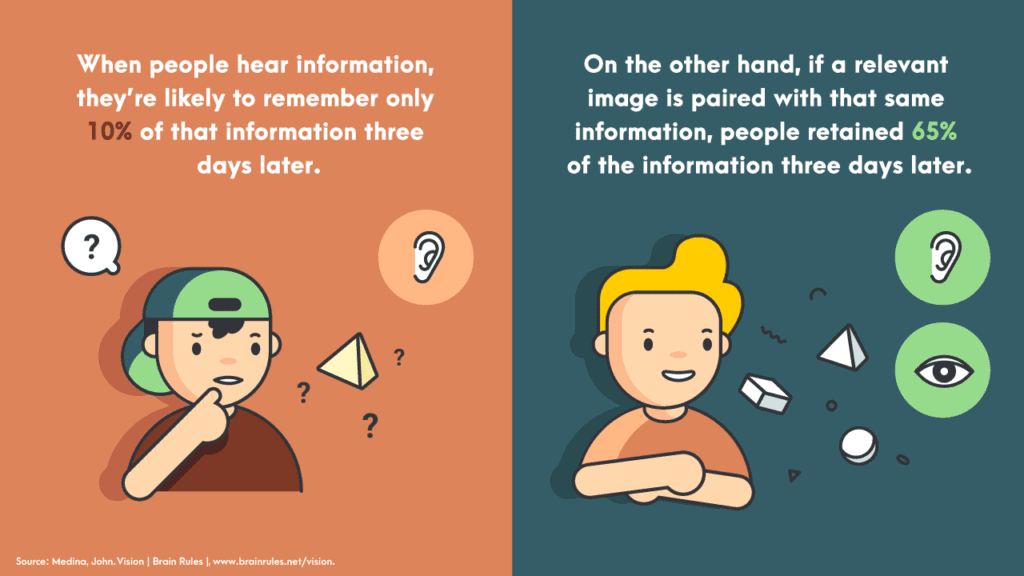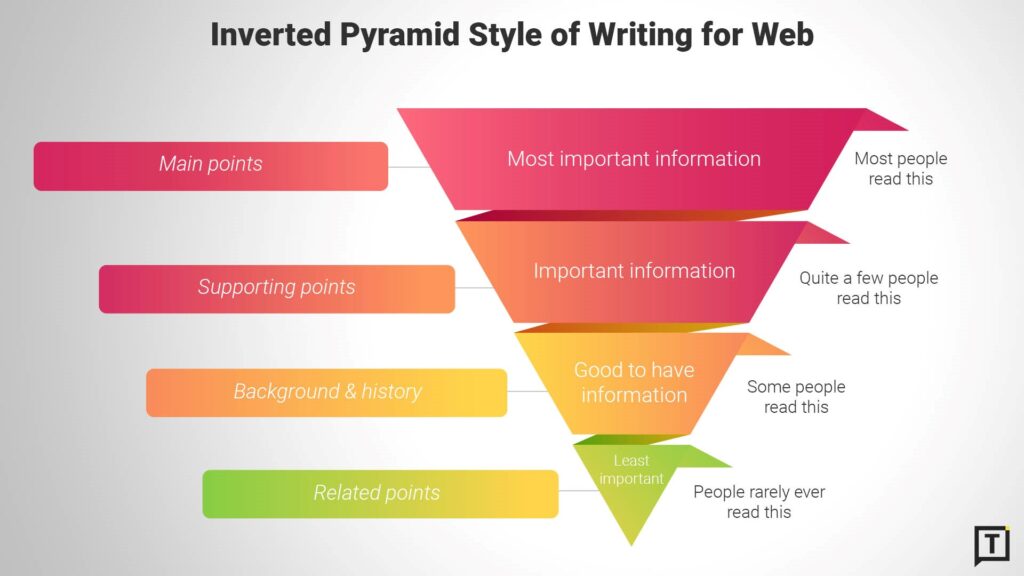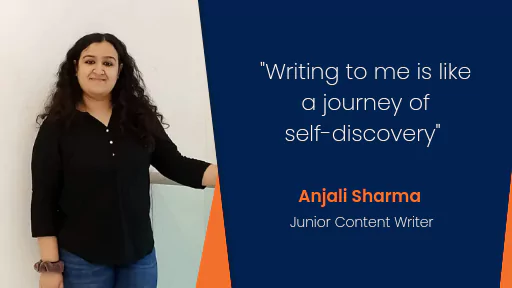Top Tips You Should Consider to Polish Your Web Content Writing
Author: Team WH
Published On: 14-04-23
Last Updated on: 14-03-24
Estimated reading time: 15 minutes
In the race for securing high organic rankings on search engine results, the quality of content often takes a backseat. While SEO-friendly strategies are crucial for enhancing overall search engine visibility, engaging and compelling content is what convinces visitors to stay on your webpage.
That’s why creating impactful website content in conjunction with a robust SEO strategy is the key to increasing conversions. Stay with us as we delve into the specifics of website content and provide answers to what should you consider when developing your website content.
What is Web Content Writing?
Search engines experience thousands of queries per second from users worldwide. Not to mention, a whopping 14% of all searches on Google are questions. In the age of easily accessible information, it is vital for brands to publish insightful content that showcases their expertise in their domain.
So, what is web content writing, and how does it help with search queries?
Web page content writing is a reliable way to publish targeted content to satiate user queries and introduce them to your brand. It is the process of ideating, creating and publishing high-quality, free content on your website to address questions related to your domain.
Posting free content on the web comes with its share of benefits:
- Helps achieve high organic rankings and establishes an online presence, preventing the need to direct funds towards paid advertisements
- Reduces cost per customer acquisition
- Authoritative content amplifies brand credibility
- Enables tailored content that strikes a chord with the target audience
Web content writing is a multi-faceted process involving several variables. Fortunately, the existence of several tried-and-tested methods can help you edge out your competition and create audience-centric content to boost website traffic.
How to Create Web Content – Top Tips to Keep in Mind
What defines quality in the context of website content? Quality isn’t strictly limited to a single aspect of website content writing but is the sum of several variables that make up the overall web copy. Here is what should you consider when developing your website content.
1. Assess and Ascertain Buyer Personas
The primary goal of a web copy is to resonate with the audience and build trust towards the brand. None of this is possible without sufficient market research before the writing process to identify and understand your audience’s demographics and cater your content explicitly towards them.
Establishing buyer personas helps you create custom web copies for prospective customers and highlight the need for your product or service. Information related to their age, geographical location, marital status and gender can assist in the development of copies that build on your audience’s pain points and convinces them to make a purchase.
Plus, the audience appreciates personalised or targeted copies. 56% of companies have increased the quality of generated leads after developing extensive buyer personas.
2. Keep it Simple
Let’s face it – complex sentences and extensive vocabulary are not your best friends while you design a web copy. The audience is keen on easy-to-read sentences that stick to the point and explain the concept in a straightforward manner. Loading your web copy with too many difficult terms can be counterproductive and lead to higher bounce rates.
It is vital to remember that your audience may not be well-versed in the industry jargon or be familiar with uncommon words. Your web copy should account for an average high schooler’s reading level to make it easier for people to understand your topic.
At the same time, avoid repeating words and focus on differentiating each paragraph. While simple web copies are appreciated, they can quickly go downhill if accompanied by repeated terms that make it challenging to read and invoke fatigue.
Fortunately, grammar and reading tools on the internet have a built-in feature that allows you to check for the overall score of your content. The point system on these tools helps determine the readability of your web copy and displays the reading level of your content.
If the readability score is poor, then instead of manually devoting time to improving it you could also use a paraphraser tool. It will automatically fix all the readability and other writing flaws in your given content while keeping its original meaning intact.
3. Diversify Your Web Copywriting
While written material forms the crux of a webpage to convey the relevant information, it can often be overwhelming for the audience to go through a wall of text. Given that the average human attention span hovers around 8.25 seconds, it can be challenging to convince the audience to go through the content.
A simple solution for this is the use of graphics and text to communicate your message. With the rise in Instagram Reels and TikTok videos, it is safe to assume that Gen Z is glued to multimedia like short-form videos and other visual representations summing up a point concisely.
Supporting your web copies with images and videos can enable prospects to remember and process the information faster. Additionally, it makes them more likely to remember your brand and associate you with a distinctive style.
The goal of diversifying your web content is to enhance its readability and express the same points in fewer words.
4. Bank on the Inverted Pyramid Model
When a user poses a query on search engines, they aspire to find the answer quickly. Hence, they are more likely to choose websites that directly answer their questions, as opposed to others who beat around the bush and answer the question towards the end of their copies.
The inverted pyramid model helps you capitalise on this audience behaviour to provide a better structure for your content. The basic gist is that you initiate your content with the meatiest piece of information or the most essential element of your topic and save the less important pieces for the end.
Using this approach, you guarantee that readers looking for a quick solution are satisfied during the first few lines of your web copy.
5. Craft Content in Unique Brand Voice

Have you wondered how some brands manage to sparkle like a diamond with their unique and exclusive tone of voice and content? These kinds of brands often end up creating a loyal audience and consumer base, eventually improving their long-term ROI.
Once you figure out who you write content for and what resonates with them, make your web writing unique and engaging. Consistency is a key that can help your brand create a distinguished personality.
Keep in mind to clarify your brand voice with the entire content team in one central and accessible document to produce cohesive, well-crafted content.
Otherwise, different website content writers may create content with inconsistent views and tones.
6. Mindfully Craft the First Line to Hook Readers
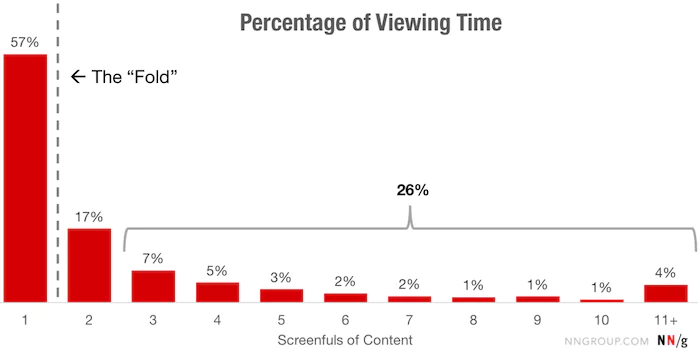
Catchy headlines are great, but getting readers to stay and read your content can be tough. Studies show that most people spend most of their time on the part of the page they see without scrolling. It indicates that users spend 74% of viewing time in the first two screenfuls.
So, if your introduction doesn’t hook them right away, they might leave.
To keep your readers engaged, it’s essential to deliver on what your headline promises. Professional website content writers can create a hook by asking a question, telling a story, or sharing a statistic.
- A thought-provoking question makes audience think or relate to your topic.
- Storytelling must be incorporated as it is a powerful way to draw your readers by creating an emotional connection.
The key here is to get the target audience to have an emotional reaction to your headlines.
7. Use Keywords Naturally, Avoid Stuffing Them in Your Content
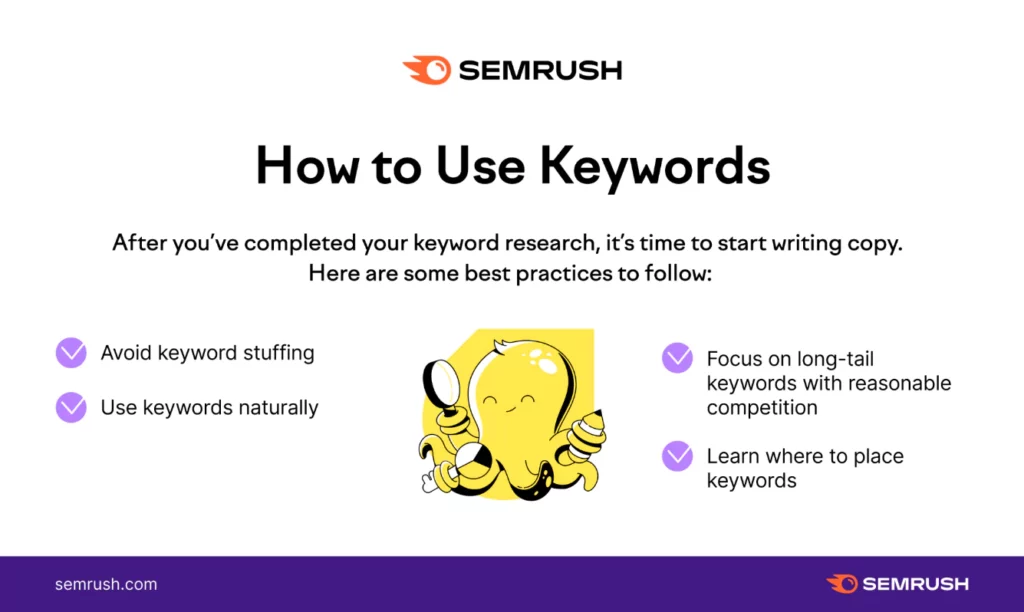
Do you know that keyword stuffing is a negative ranking factor? Trying to manipulate search rankings by repeating words or phrases can lead to lower rankings in Google search results.
So, how can you use keywords safely and organically?
According to some experts, there is no magic number or a hard and fast rule to include relevant keywords. Others recommend that a keyword density of around 1-2% is preferable.
Instead of overusing the same keyword repeatedly, you can enhance your content by including long-tail keyword variations. It helps you achieve the desired keyword density and adds diversity and richness to your content creation, making it more engaging for readers while still being search-engine friendly.
Remember, quality content that provides value to your audience should be the primary focus.
8. Maintain Action in Your Content
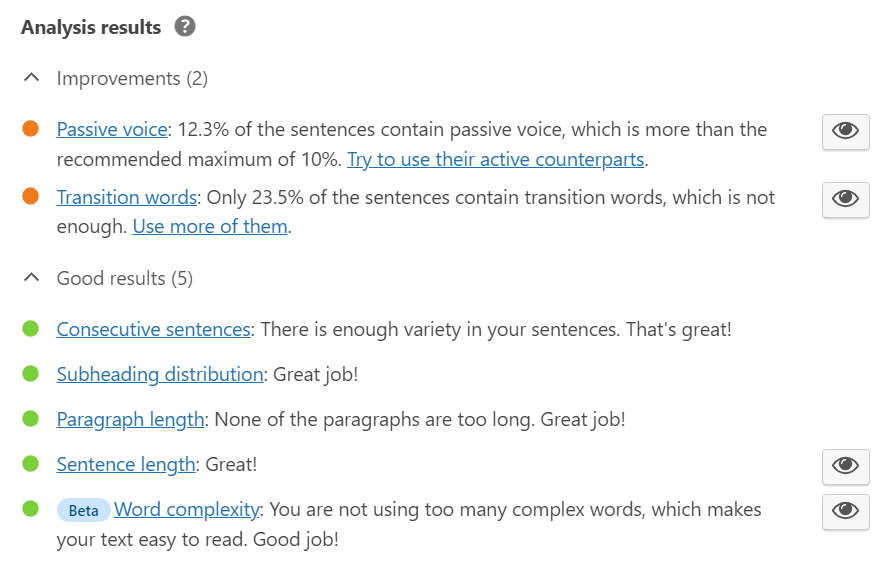
Let’s face it – passive voice is wordy and complicates the sentence structure. Audiences find web content containing complex sentences jarring.
For example:
- Passive Voice: “Products can be ordered on our website.”
- Active Voice: “You can order products on our website.”
Your web copy should be more impactful and direct. To achieve this, the sentence structure, word choice and style must focus on the action. It allows you to craft a more engaging and reader-friendly tone.
Note that passive voice is not a ranking factor. So sparse use of passive voice is acceptable. According to the Yoast readability analysis, maximum 10% use of passive voice is okay.
In fact, passive voice can sometimes be useful if sharing background information or emphasising the impact of specific actions.
You can vary the use of passive voice in the form of subtle adjustments to infuse excitement and engagement into your content.
9. Help The Reader Visualise
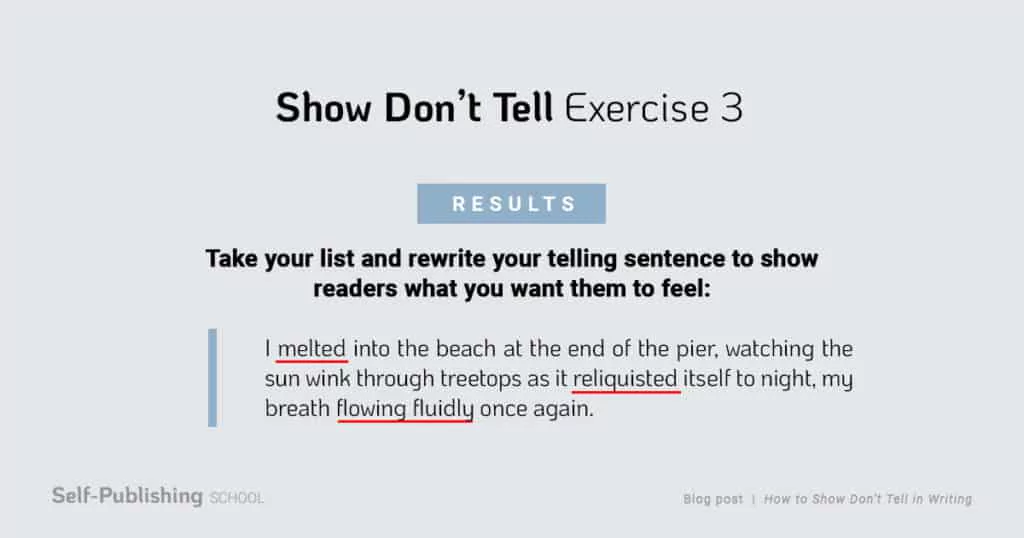
‘Show, don’t tell’ is a powerful web writing principle that adds depth and clarity to your content. Rather than using vague or general statements, web content writers must provide specific, real-world examples. It helps readers better understand and visualise your messages.
Vivid and specific descriptions of a product or service also help your website’s SEO and give the reader the detailed information required.
10. Make the Writing More Scannable
To keep the readers engaged, ensure that the audience finds your web page content easy to skim through. Most web users scan pages to find specific information, so make it accessible. Here are some related content writing tips to keep in mind:
- Instead of dense paragraphs, use bulleted or numbered lists to break up content into short paragraphs.
- Organise important information into labelled tabs instead of presenting it all on one long page.
- Remember to include “white space” around paragraphs, images, and other elements. While it may seem like wasted space, white space improves readability and makes the content more enjoyable to read.
So don’t shy away from making your content scannable and user-friendly to keep your readers interested.
11. Maintain the Word Choice Balance
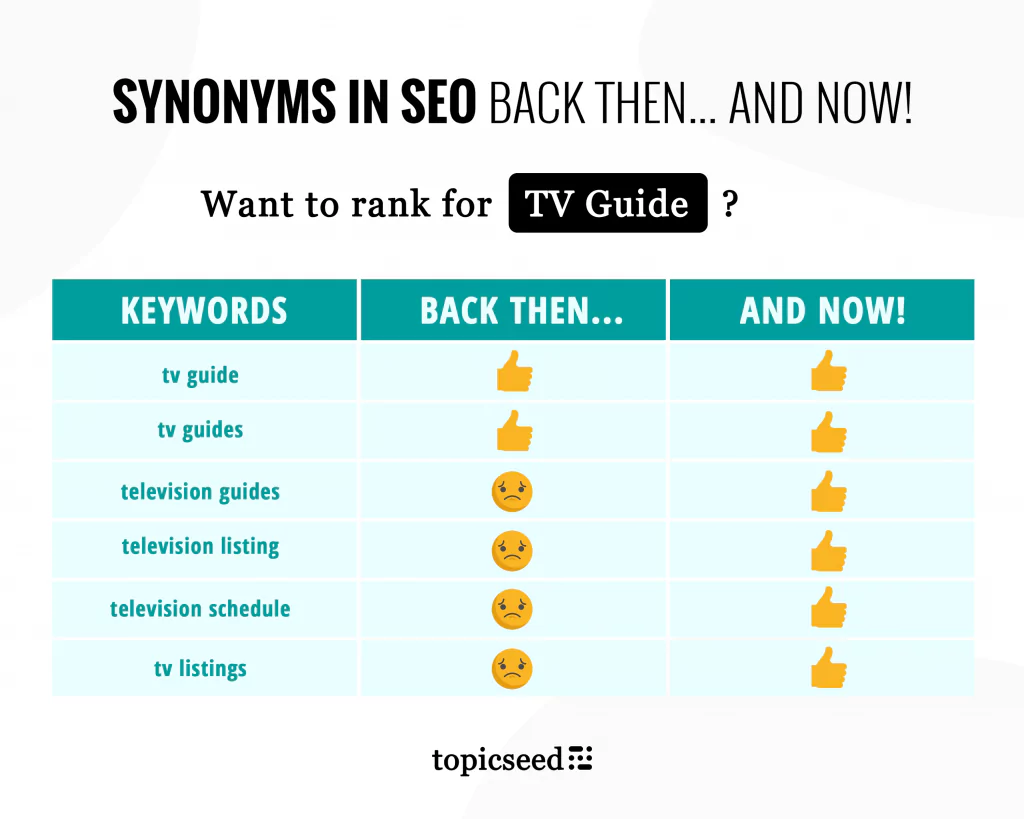
While writing content, the key is to use different variations of words. You can use a free word cloud tool to diversify your word choices. It allows you to paste your text to see the most frequently used words. Larger words indicate higher usage frequency. If you notice any overused words, find fresh synonyms that enrich your content. You can also see negative words that stand out and tweak them to create a more positive tone.
However, there is an exception in using synonyms. It’s essential to keep key business terms consistent throughout your website to avoid confusion. For instance, if you are a fitness trainer, stick to using “exercise plans” consistently. Avoid using different terms like fitness routines or workout programs on different pages.
Compile a list of terms that describe your business offers and group similar words together. Having this glossary allows you to create a cohesive and engaging user experience.
12. Optimise for Search Engines
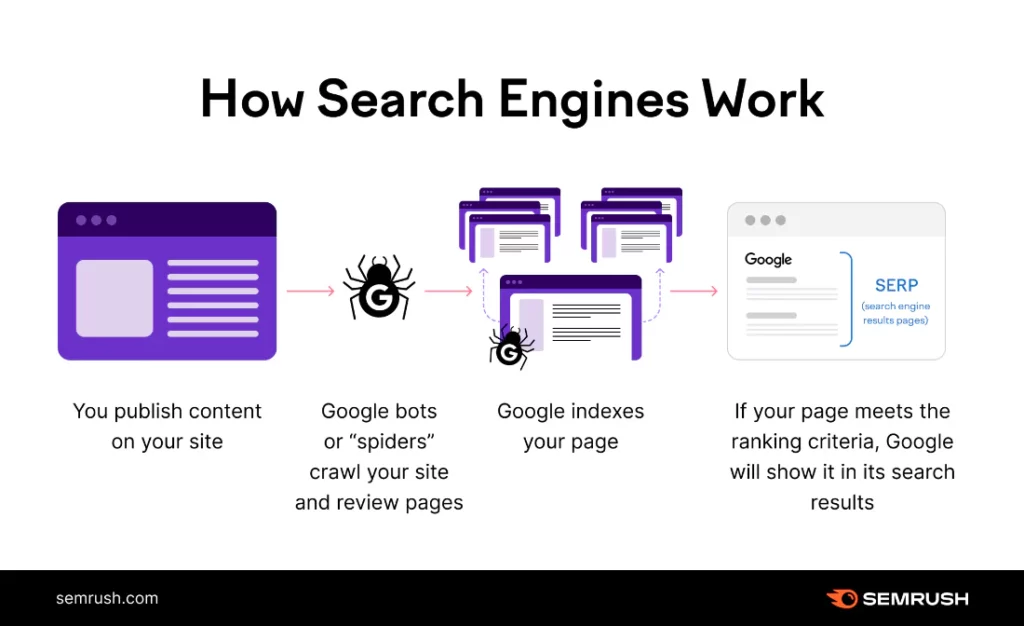
While writing good website content for the readers, ignoring search terms and engines entirely isn’t a wise choice. Optimisation of content for the audience and adding relevant keywords in titles, sub headers, and meta descriptions is also essential.
Apart from making quality content searchable using earlier content writing tips, here are some SEO content writing practices you should consider:
- Write keyword-rich headlines and sub-headers: Ensure adding a primary keyword to the title and H1. Also, use 5-10 more keywords in subheadings and the body text.
- Use metadata: Summarise the web content in 1-2 sentences to encourage a user to click on your link.
- Include readable URLs: Descriptive URLs help the reader to understand what’s inside the page.
13. Layer Your Web Content
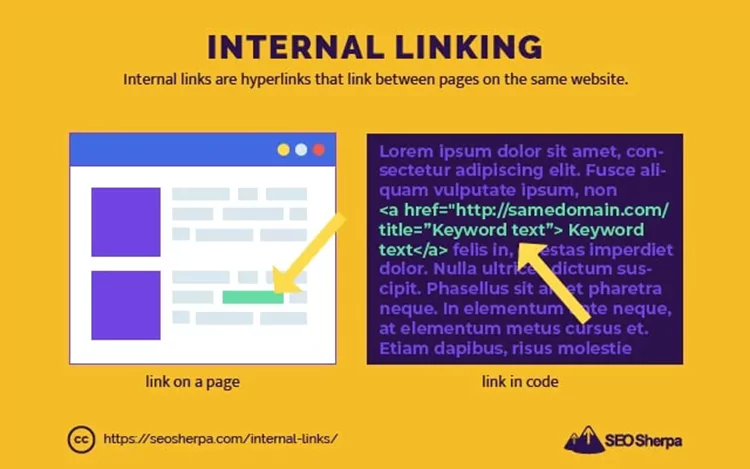
Web content allows you to easily direct readers from one page to another. You can do this by adding hyperlinks to certain words or phrases that lead to other relevant resources on your website. It keeps readers engaged and spends more time on your website.
Apart from engagement, it also improves your website’s SEO. However, it’s essential to keep the links relevant and helpful. If you put too many internal links in your text, it might confuse your readers. According to Google, it’s best to keep a reasonable number of hyperlinks on a page.
So, be strategic with your hyperlinks, guide your readers to relevant content, and improve your website copy.
14. Focus on Building Trust Factor
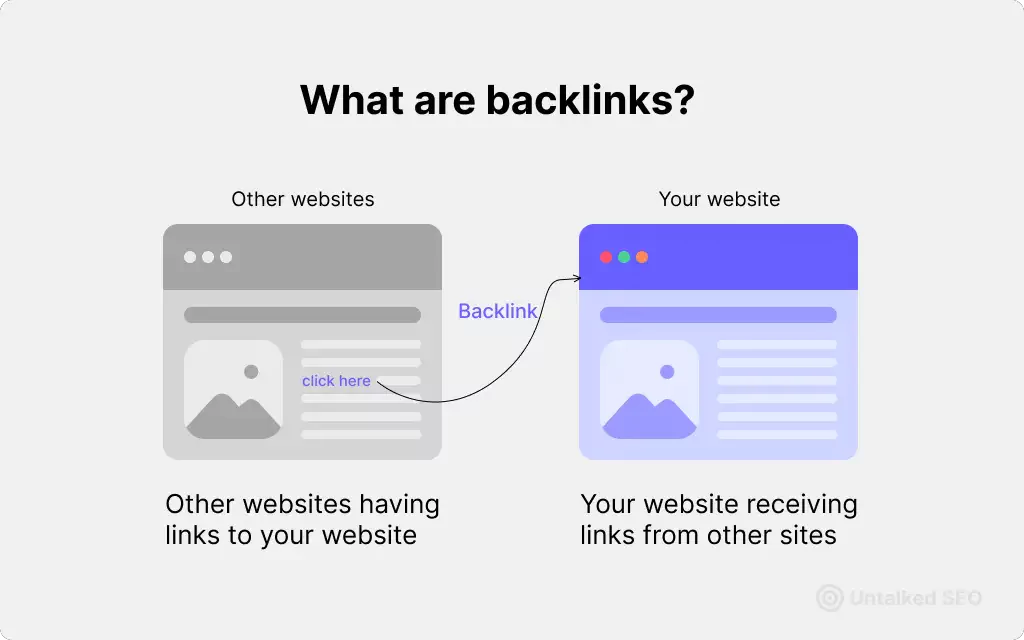
In the sea of online content, it’s crucial to make your work stand out and build trust. There are several reasons why people would choose your content over others:
- Established reputation: If you have become a respected figure in your field, you naturally have an advantage over lesser-known brands. However, building a reputation takes time, and you must start somewhere to prove your worth.
- Add hyperlinks to authority websites: Linking to reputable sources such as government websites and academic content adds credibility to your writing.
- Earned backlinks: Getting credible websites to link back to your content is another way to boost trust. When high-authority sites link to your content, it signals to readers that your work is trustworthy. Additionally, earning such backlinks can improve your organic search rankings.
15. Use Effective CTA

Creating great content with an effective call to action (CTA) is a powerful way that drives the purpose of your content. It is the action you want your readers to take after they land on your website or landing page.
For example, if your goal is to get readers to subscribe to your newsletter, your CTA could say, “Subscribe for Free Content.” If you want them to make a purchase, your CTA could be “Shop Today.”
The key to a successful call to action is simplicity and clarity. Use straightforward language that aligns with your brand voice. A compelling CTA encourages your readers to act and achieve the goals you’ve set for your website.
How is SEO-Optimised Website Content Helpful?
Content writing continues to reign as the king in the marketing landscape. However, merely creating content is no longer sufficient to gain a competitive edge. In order to truly succeed in content marketing, SEO-optimised website content is a must. Let’s find out how it helps drive results.
1. Better Search Engine Visibility
SEO-optimised website content guides search engines to your website. By leveraging strategic keyword research and implementing SEO-friendly best content practices, your web copy aligns with user intent and the latest search algorithms.
It boosts visibility and ensures your content ranks higher on SERPs, and results in driving organic traffic to your site, helping you stand out from the crowd.
2. Increase Traffic and Conversions
SEO content writing goes beyond simply attracting more site visitors. It attracts the right audience, those actively seeking solutions and valuable information related to your niche.
Web content writers can use long-tail keywords and optimise the content structure to precisely target the desired audience. It ensures higher engagement and encourages site visitors to spend more time on your specific web page, converting potential customers into loyal buyers.
3. Improves Credibility and Authority
Well-crafted and original content is the foundation of credibility. But SEO-optimised content takes your content a step further. Writing website copy that’s well-researched, informative, and authoritative helps establish you as an industry leader.
As search engines recognise your website’s value, you gain domain authority, which in turn boosts your chances of ranking higher for relevant keywords.
4. Seamless User Experience
Search engine optimisation also focuses on improving web design and optimising loading times, mobile responsiveness, and content structure. It ensures a smooth and enjoyable browsing experience for users, reducing bounce rates and ensuring repeat site visitors.
Final Thoughts
Drafting captivating website content is a core feature of content marketing efforts. After you create a website, the quality and value of your web copy is what drives audiences to your brand and eventually increases brand awareness among the masses.
Gripping website content starts with comprehensive market research. After you identify your target audience, you gain the ability to adjust your web copies and accommodate the need of your targeted demographics. Mix and match your content with visuals to maintain the audience’s attention and witness increased engagement!
Add these tips on what should you consider when developing your website content to make your content more enriching and attract a wider user base to improve revenue and maximise profits.
Looking for quality website content writing services? We, at WrittenlyHub, have the right content creation expertise to write outstanding copy for your website!
People Also Ask
Q) What is SEO web content writing?
SEO web content writing is creating online content optimized for search engines to improve visibility and rankings. It focuses on incorporating relevant keywords, engaging readers, and following SEO best practices to attract organic traffic. Quality content, coupled with SEO techniques, enhances website authority and boosts online presence effectively.
Q) What should you consider while developing your web content?
Any website content is incomplete without an idea about the preferences and requirements of the target audience. The first step is to assess buyer personas and structure your content in a way that makes it easy for the audience to understand. Use the inverted pyramid model to grasp user attention and increase the average time a prospect stays on your page.
Q) How long does it take to write website content
The time to write website content depends on factors like complexity, research needs, and word count. Simple pages may take a few hours, while comprehensive content or large websites could take weeks. Efficient planning, clear objectives, and consistent effort can streamline the process and ensure timely completion.
WrittenlyHub website copywriting services are tailored for quality and time-efficiency.
Q) How to write great web content?
Writing great web content involves understanding your audience, conducting thorough research, and crafting engaging, informative, and well-structured content. Incorporating relevant keywords, using clear language, and formatting for readability are essential. Additionally, addressing user needs, providing valuable insights, and maintaining consistency contribute to creating compelling web content.





